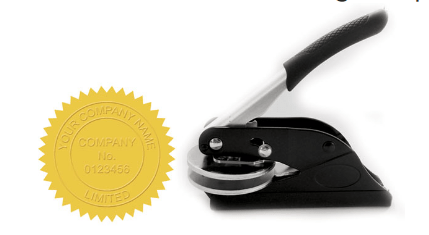Everything you need to know to start using embedding in your design projects, and it seems like you know. Embossing only enhances the surface of your design so that its. Depth is reduced. This is the real-world equivalent of the bevel effect and is probably taken from relief sculptures – resembling relief, where the depth is supposed to be much higher than it is. The word itself is Old French, derived from m (in) and boss (protuberance).
How paper embosser relates to graphic design – embossing has been used for hundreds of years as a finish for high-end printed products. This is a great way to give your design another dimension that can’t print. Emboss can be used manually or by foil, coatings or printing.
Embossing is done by pressing a sheet of paper (or other substrates) with female embosser, in which the design is engraved or engraved. This is usually done with a male counterpart under the paper so that the paper is sandwiched between the two and transferred to the design paper.
How does it work?
Although the embedding looks quite deep, it is usually no more than 15 µm and a maximum of 25 µm. i.e., 25 thousand inches. Your average ambush is 1/64 of an inch. You can see in this photo how the depth of the embedded dye affects the appearance of the final part. Note that as the depth of the aspect increases, the paper is more likely to tear (as can be seen in “D” of the “Guide”).
While embossing refers to a technically raised surface, embossing can also create a depressing design on the surface. In the graphic design and printing industry, it is commonly referred to as “deboss”. For no deboss, the male and female die so that the top (front side) of the sheet is pressed against the male dye and the female sits at the bottom of the pepper. When an emboss is registered for printing, one can create the look of an engraving.
Often, the press that makes the ambush can be replaced with the press that makes the foiling. Both processes require very high pressure and, for some effect, a hot plate. Also, foiling and embossing are often done simultaneously and so consider a machine that can handle both.
The most common presses are:
Clamshell Press:
This press closes like a clamshell, sandwiched the paper between the male and female. This type of machine usually has a small footprint with a lot of pressure. It makes a great choice for short runs. It’s also easy to switch dyes and change your setup (make-ready). If you have been around for a long time and have been up for a long time, you are bound to hear Cluj. It is the most popular clamshell stamping press and almost directly synonymous with the clamshell hot stamping press.
Direct Stamp Press:
The colour dye comes straight down to the stamp area, and the paper is fed. Due to the straight path of the paper, this is faster than the clash press. But in general, the time to set up is long. For longer walks, this is better than CP.
Roll press:
Roll press is similar to an off-facet printer. It uses colour instead of using ink plates. This uses a die mounted on a press roller. The paper, either on a roller or in sheets, is filled and rolled influences the design. It is the fastest of the three press types, but dies are more expensive, and the set time is much longer. So really, this method is used for things that have a huge (in hundreds or even millions) mass volume.
Types of dies and embossing
Die as we stated above. Dyes are metal plates that have the appearance of being carved or engraved on them. The dye may also refer to the dead male equivalent of the female emboss, although this is commonly known as a countertop (for plastics and metals) and is ready for paper. Colours are the “master” for any ambush horn and thus largely indicate the type of ambush you get.

This is the most common type of embossing die (note that death is made of metal and not all metals are created equal – the metals commonly used for embossing die are magnesium, copper, bronze and steel – covered.
An embossing or debossing dye that rotates the paper’s surface to a single layer. They are both very common and cheap in all embossing. The dyeing process is similar to foil dyeing, except that the image is vertical. Single level dyes are usually made from magnesium or copper. Magnesium dye can be half the price of copper, but its price is between 5 to 10 thousand impressions. In addition, magnesium da dye can be destroyed using a single wrong in a stamping machine.
Regardless, make sure to buy only quality embossing machines and get custom embossing stamps made from StampStore in Australia.
